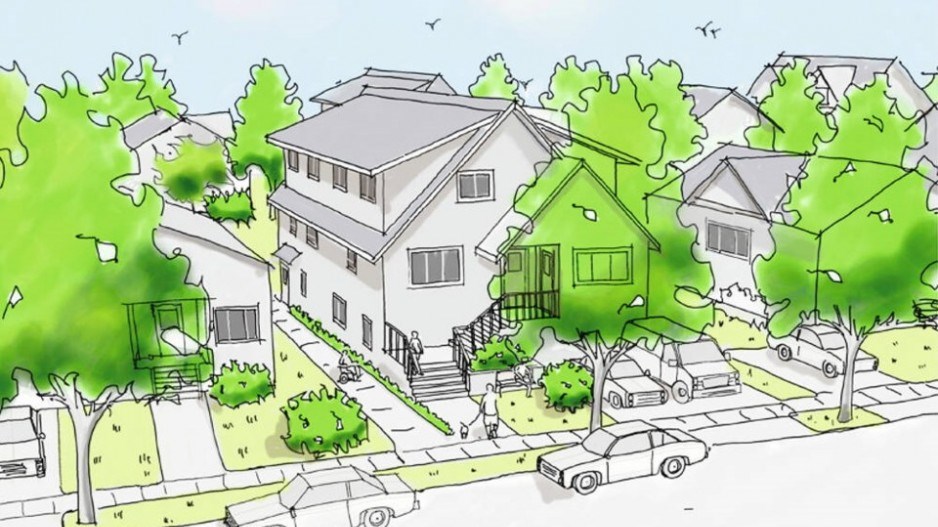Victoria’s missing-middle housing initiative may be tweaked, simplified and improved this week as council considers a series of amendments to make the program more workable.
At Thursday’s committee of the whole, council will consider changes including eliminating a requirement for an adaptable dwelling unit in development proposals, increasing the allowable height of houseplexes, eliminating the requirement for a suite to be included in projects, reducing required setbacks for townhomes and increasing the maximum allowable site coverage for some townhome projects.
The changes are being considered because the missing-middle program has done little to bring new housing of any kind to the city.
A six-month review of the program undertaken by city staff found only three development permit applications were submitted.
The staff report noted the lack of applications “underscores a theme of feedback received through pre-application conversations — the regulations are too prescriptive and onerous in their aim to address many objectives.”
The report said that the proposed changes should make it easier to establish missing-middle housing.
“Feedback received and insights from administering the missing middle regulations in the six months since they took effect, highlighted a need to make the regulations less prescriptive and onerous. Simplifying the conditions of use, eliminating many of the amenity contribution requirements for bonus density, reducing the corner townhouse setbacks and other minor amendments are recommended,” the report said.
Luke Mari, principal of Aryze Developments, called the revisions “a move in the right direction.”
“The last policy, as many noted, was very prescriptive and tried to do too much under one policy. So this one is kind of starting to walk back some of those excessive asks,” he said.
Mari said there was no one hurdle that held up developer applications, but a combination of the setback requirements, the need for an adaptable suite and a rental suite left many plans on shelves.
Aryze, which builds homes across the housing spectrum, including missing-middle projects like townhomes, had considered three or four projects that would fit under the policy. All of them were sidelined because of what was seen as an overly restrictive policy.
“And there was also no way to get it built without variances, which meant you had to go to council anyways, which kind of defeated the point in the first place,” he said. “I still think there’s areas for improvement and hopefully council will put forth some amendments, but it’s certainly a step in the right direction.”
Casey Edge, executive director of the Victoria Residential Builders’ Association, said time will tell if the revisions make a difference.
He said he knows of at least one builder considering the new criteria and may put forward a missing-middle project that has been on hold for months.
But he said the need for revisions could have been avoided if the city had listened to builders in the first place.
“Builders’ advice was ignored the first time,” he said, noting an earlier staff report warned council to avoid highly rigid, onerous, and prescriptive regulations. “The same thing happened with garden suites when we advised against requiring each suite to receive council approval. (As a result), they received very few applications, so they changed their policy.
“These regulatory revisions cost time and money. They need to get it right the first time. If staff and council had listened in January, this could have been accomplished six months ago.”
The missing-middle initiative, enacted in March after years of contentious debate, was designed to streamline the approval process in order to increase the number of housing options like townhouses and duplexes, an area between single-family homes and condo towers.
It was also supposed to allow city staff to greenlight permits for projects that comply with all design guidelines and zoning without having to get council approval.
Those that support missing-middle housing believe it will ultimately help create more housing options so more families will be able to stay in the city, while ensuring new development suits the character of neighbourhoods.
Those against it say it does nothing to improve affordability, and could kill green space and displace renters as older homes with suites could be demolished to make way for large houseplexes.
Others believe it hands developers, who no longer require rezoning approval to demolish and rebuild on single-family lots, a blank cheque to build what they want.
>>> To comment on this article, write a letter to the editor: [email protected]




